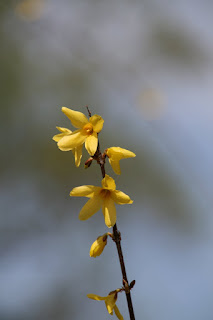
Fruit Trees 2009
Royal Gala Apple
Dwarf: The very
best-eating apple, sweet and crunchy, matures in late summer. This
red-orange apple brings the highest prices in grocery stores and
fruit markets. Pollinator required. Zone 5.
Golden Delicious
Apple
Dwarf: The original
Golden Delicious is still the best. Sweet and spicy. Most popular
apple world over. Self-pollinating. Zone 5.
Rynbrandt Cherry -
sweet
Semi-dwarf: Large,
sweet, firm, jet-black cherries. Resistant to disease and cracking.
Upright, spreading tree with nice form. Very hardy. Pollinator
required. Zone 5.
Danube Cherry -
Hungarian Tart (Erdi Botermo cv.)
Semi-dwarf: Danube
produces an abundant crop of large, juicy, glossy dark red fruit with
semi-firm flesh and delicious sweet-tart flavor. A naturally dwarf
tree. Self-pollinating. Zone 4.
Jubileum Cherry
– Hungarian Tart (Erdi Jubileum cv.)
Semi-dwarf: High
quality variety, prized for its large, firm, very dark purple fruit.
Tart and sweet at the same time, it is great for fresh eating and
preserves. A naturally dwarf tree. Self-pollinating. Zone 5.
Montmorency Cherry
– tart
Semi-dwarf: Fruit has a
bright red skin and juicy yellow flesh. Trees are vigorous growers,
early bearers and heavy producers. Self-pollinating. Zone 5.
Royal Ann Cherry
– Sweet
Semi-dwarf: Produces
large, sweet fruit that is light yellow with a pinkish blush.
Excellent fresh eating and canning. Not compatible with Bing.
Pollinator required. Zone 5.
Green Gage Plum
– European
Semi-dwarf: The fruit
has green and yellow skin with rich, golden flesh. A sweet plum with
a very distinctive flavor. The fruit is oval in shape. Good for fresh
eating as well as desserts and preserves. Self-pollinating. Zone 5.
Shiro Plum –
Japanese
Dwarf: The only
Japanese variety we offer that produces a dark yellow fruit. Fruit is
very juicy and medium in size. Pollinator required. Zone 5.
Santa Rosa Plum
– Japanese
Dwarf: This large plum
with its deep red-purple skin and amber flesh is juicy and delicious.
Self-pollinating. Zone 5.
Stanley Prune Plum
– European
Dwarf: A blue, medium
sized plum, oval in shape. Freestone, very hardy, yields consistent
large crops. Self-pollinating. Zone 5.
Redgold Nectarine
Dwarf: This variety
produces an excellent dessert quality red fruit which is sweet and
juicy when fully mature. Freestone. Self-pollinating. Zone 5.
Sunglo Nectarine
Dwarf: A fuzzless
peach. This variety is a heavy producer of mid-season fruit with
beautiful color and exceptional flavor. Freestone. Self-pollinating.
Zone 5.
Burbank July Elberta Peach
Dwarf: Large, juicy,
yellow fleshed peach developed by Luthur Burbank. The best for fresh
eating. Mid-season. Freestone. Self-pollinating. Zone 5.
Redhaven Peach
Dwarf: The standard by
which all peaches are compared. Yellow fleshed. Exceptionally hardy.
Matures early and crops heavily. Semi-freestone. Self-pollinating.
Zone 5.
Summer Pearl Peach
Dwarf: A very hardy,
white-fleshed, mid-to-late season variety. It has fantastic fruit
quality and excellent flesh firmness. Freestone. Self-pollinating.
Zone 5.
Jiro Persimmon
(Diospyros kaki)
Asian Persimmon. Very
good cold-hardy cultivar with large, sweet, orange-red fruit and
upright tree form. Ripens in late October. Fruit is delicious when
firm like an apple or let it soften like a tomato for a sweeter
flavor. Non-astringent. Mature 10-12’. Self-pollinating. Zone
6.
Nikita’s Gift
Persimmon (Diospyros virginiana x kaki)
Ukrainian Persimmon.
This variety bears abundant crops of 2-1/2” diameter,
reddish-orange fruit. Fruit is sweet and flavorful. Fruit must fully
soften before eating. The orange-yellow fall foliage is also
strikingly beautiful. Mature 10-12’. Self-pollinating. Zone 5.
Brown Turkey Fig
(Ficus carica)
Handsome, low, bushy
plant produces medium to large elongated purple-brown fruit.
Everbearing beginning in early June. Mature size 10’.
Self-pollinating. Zone 5.













